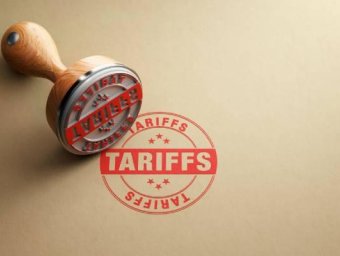Trump moots 25% tariffs on auto, pharma imports | 20 February, 2025

US risks shortages as India dominates generics space; auto cos expect muted pain
The US is likely to impose around 25 per cent tariffs on automobile, pharmaceutical, and semiconductor imports, with a formal announcement expected by April 2, said American President Donald Trump marking the latest move in a string of trade measures that could disrupt commerce globally and with India.
Industry insiders in India warned that any such move in the pharmaceutical sector could be counterproductive for the US as it may face increased drug shortages if tariffs are imposed on such imports. Meanwhile, the impact on the automobile sector in India is expected to be relatively limited, as the country exports a minuscule number of vehicles to the US. Component exporters, on the other hand, are in a wait-and-watch mode.
Pharmaceutical executives believe the proposed tariffs could lead to a shift in production to the US, which would not only drive up the cost of finished medicines there but also exacerbate shortages in the short to medium term.
Speaking to reporters at his Mar-a-Lago club, Trump said tariffs could rise "very substantially" over the course of a year and stressed that he wanted to give companies time to relocate their operations to the US before enforcing new import taxes.
"When they come into the United States and they have their plant or factory here, there is no tariff.
So we want to give them a little bit of a chance," he said.
India supplies 47 per cent of the US' generic medicines, making it the largest source of affordable pharmaceuticals, ahead of domestic producers (30 per cent), West Asian countries (11 per cent), and Europe (5 per cent).
The increase in average effective tariff rate imposed by the United States (US) on Indian exports could potentially impact India's gross domestic product (GDP) growth by 0.1-0.3 percentage points, according to Goldman Sachs report on Wednesday.
This forecast considers various scenarios, including the US government's planned reciprocal tariffs in early April and the price elasticity of US demand for Indian exports.
A potential GDP growth impact can be higher-0.1-0.6 percentage point- in the case of the US imposing additional tariffs on all countries. This is because India's domestic activity exposure to US final demand will be roughly twice as highabout 0.4 per cent of GDP- given the exposure to America through exports to other countries, Goldman Sachs said in the report.
Under the latest 'Fair and Reciprocal Plan', the US government is working on a reciprocal plan to match other countries' tariffs, taxes and non-tariff barriers.
According to the report, there are three ways in which India can get impacted by reciprocal tariffs-country-level, product-level and reciprocity, including non-tariff barriers.
Implementing country-level reciprocity would be the most straightforward approach, involving increased tariffs on all US imports from India.
(Source: Business Standard)












